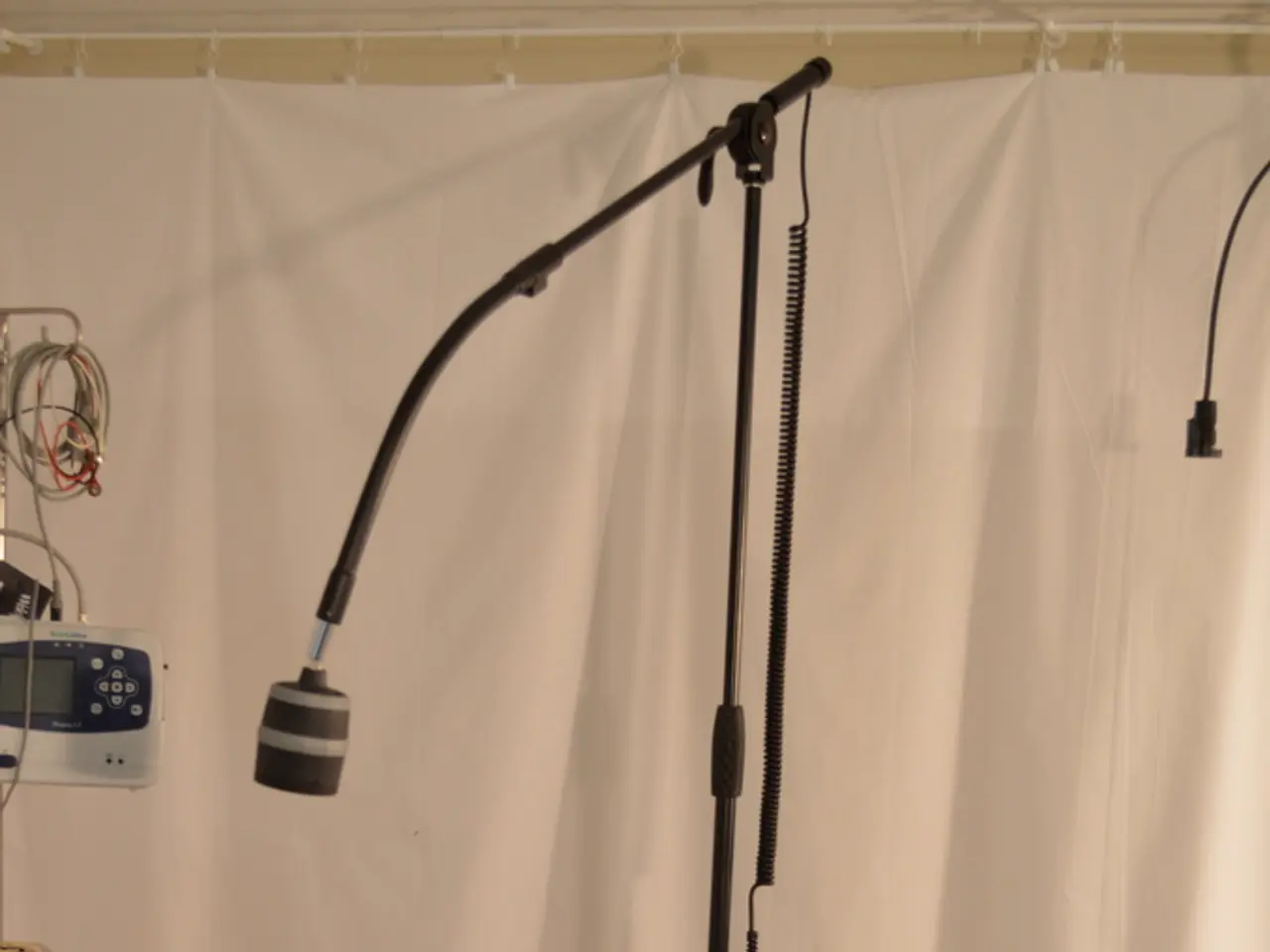Exploring the Function: Insight into a Microphone's Importance in Your Personal Recording Space
Microphones play a pivotal role in various aspects of our lives, from presentations and podcasts to broadcast media and telephony. These devices convert sound into electrical signals, enabling clear communication and enhancing our interaction with technology.
Different Types of Microphones
There are three main types of microphones: dynamic, condenser, and ribbon microphones, each with distinct characteristics and applications.
Dynamic Microphones
Dynamic microphones are robust and durable, making them ideal for live performances and loud sound sources such as guitar amplifiers and drums. They operate via a diaphragm attached to a coil moving in a magnetic field. Examples include the Shure SM58 for vocals live, Shure SM57 for instruments, and Sennheiser e835 for vocals and speech. They are often "plug and play" and suitable for noisy environments.
Condenser Microphones
Condenser microphones use a capacitor (capacitive diaphragm) and require external power (phantom power +48V) to operate. They have a wide, flat frequency response with high sensitivity and excellent transient response, making them preferred for studio recordings, vocals, and acoustic instruments. They pick up more detail and nuance but are more sensitive to handling and ambient noise. Popular studio options include the AKG C414 XLII, which offers multiple polar patterns and low noise level.
Ribbon Microphones
Ribbon microphones employ a thin metallic ribbon suspended in a magnetic field to pick up sound. They capture a warm, natural tone favored for vocals and acoustic instruments but are more fragile and require careful handling. They generally do not need phantom power but cannot tolerate phantom power being accidentally applied.
Choosing the Right Microphone
Choosing the right microphone depends on the application, environment, and desired sound. For live events, dynamic mics are preferred for durability and feedback resistance. For studio recordings requiring detail and clarity, condensers are favored. Ribbon mics are special-use for warm tones but need careful handling and studio conditions.
In addition to choosing the right microphone, accessories such as pop filters and shock mounts are frequently employed to minimize unwanted noise and plosives. Electret condenser microphones, lightweight and affordable, provide high sensitivity, making them a popular choice for many applications. Intercom systems also employ microphones to facilitate conversation across distances.
As technology advances, manufacturers are experimenting with hybrid technologies, combining features from traditional and digital microphonic technologies, offering even more versatility and high-quality audio in various settings.
| Microphone Type | Operating Principle | Power Requirement | Strengths | Common Uses | |-------------------|-------------------------------------|--------------------------|--------------------------------|-----------------------------------------| | Dynamic | Coil and diaphragm in magnetic field| None | Durable, handles loud sounds, less sensitive | Live vocals, instruments (drums, amps), public speaking, concerts | | Condenser | Capacitor with diaphragm and backplate| Phantom power (+48V) | Highly sensitive, detailed, good transient response | Studio vocals, acoustic instruments, podcasts, precise recordings | | Ribbon | Thin metallic ribbon in magnetic field| Usually none (must avoid phantom) | Natural, warm tone, smooth high-end but fragile | Studio vocals, acoustic instruments, vintage sound applications |
Regularly clean your microphone with a soft, dry cloth and store it in a dry place to prevent humidity damage. By understanding the different types of microphones and their applications, you can make an informed decision when choosing the right microphone for your needs.
- For live performances, instrument amplifiers, and drums, dynamic microphones, like the Shure SM58 and Sennheiser e835, are preferred due to their robustness and resistance to feedback.
- Condenser microphones, such as the AKG C414 XLII, are popular for studio recordings, vocals, and acoustic instruments because of their wide frequency response, high sensitivity, and excellent transient response.
- Ribbon microphones, like the ones preferred for vocals and acoustic instruments, employ a thin metallic ribbon and capture a warm, natural tone but are more fragile and require careful handling.
- In addition to choosing the right microphone, accessories like pop filters, shock mounts, and electret condenser microphones help minimize unwanted noise and plosives.
- As technology continues to evolve, hybrid microphones are being developed, combining features from traditional and digital microphonic technologies, increasing versatility and providing high-quality audio in various settings.
- To maintain the longevity and optimal performance of microphones, they should be regularly cleaned with a soft, dry cloth and stored in a dry place to prevent humidity damage.
- To facilitate conversation across distances, intercom systems also employ microphones, reflecting the integration of microphones into various aspects of our home-and-garden lifestyle and gadget enthusiast culture.





